Have Your Flat Roof and Your Snow Too
As the snow begins to fall here in Maine, I’m reminded of just how much our building technology has evolved from the primitive hut informed solely by functional necessity to our modern abodes informed by convenience, luxury and nearly infinite choice. The very notion of shelter is linked to the image of a roof above our heads. And while the elements of snow and rain may shape our living habits, advances in material technology and application now afford us a broad range of choice when it comes to the shape of the roofs over our heads. Contrary to popular belief, even those of us living in extremely snowy, wet environments are able to live beneath a flat roof.
There are many misconceptions about the use of flat roofs in snowy environments. The truth is, a flat roof can be designed and constructed to address each and every one. So if you’re a modernist living in snow country, fear not. As you’ll see below, you can still have your flat roof.
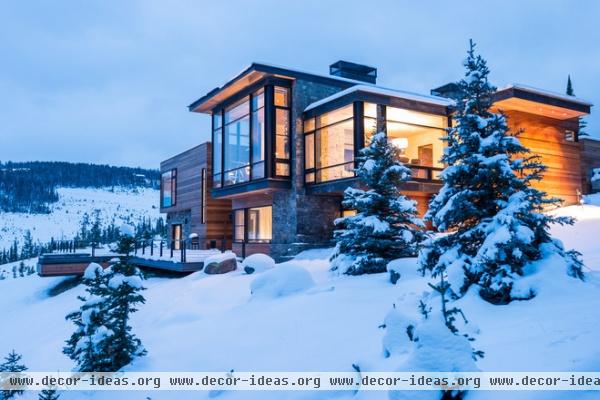
Myth: Flat Roofs Can’t Possibly Support All the Extra Weight
A totally valid concern, but rest assured, your architect and engineer have this in mind when designing the roof structure. Certainly, the weight of snow can add up, but your home must support a variety of loads: wind, seismic, building weight, furniture, occupants etc. Snow is actually one of the easiest to design for, and all structures are required to be constructed to support local snow load conditions regardless of roof pitch.
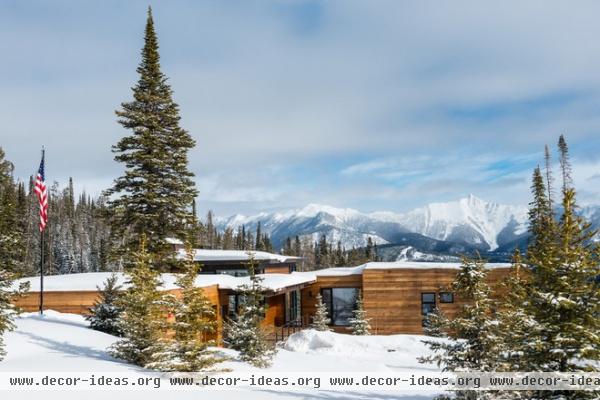
I typically find that the depth of the structural framing required to support snow loads on flat roofs in my area coincides nicely with the amount of insulation I’m required to provide anyhow. So a 12-inch framing depth allows room for the right amount of insulation in the cavity. And whenever it snows, the flat roof supports an additional insulating blanket.
The R-value, or resistance to heat flow, for snow is about R-1 per inch. That means 12 inches of snow on a flat roof creates an additional R-12 of insulation that arrives at a time of year when you most need it.
This image depicts another benefit of flat roofs: They can be extremely low. Combined with the snow-catching ability, low and flat roofs are able to blend in with their natural surroundings quite seamlessly.
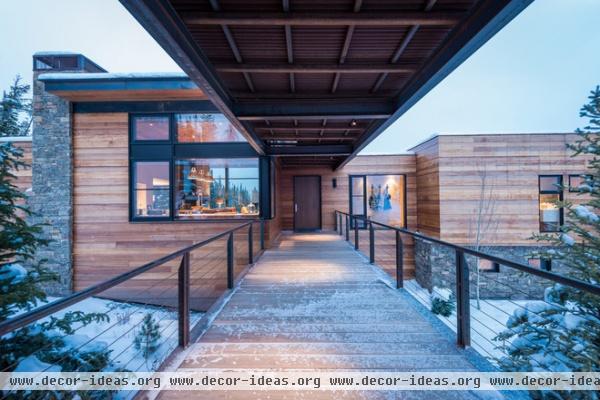
Employing a combination of steel and wood on this connector roof, the architects engineered the roof to support sustained snow loads while capably protecting the walkway below from snow accumulation.
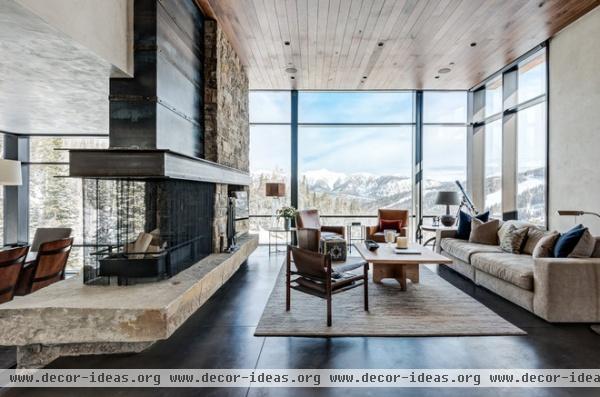
Myth: Flat Roofs Leak More
Yes, they can leak; so can pitched roofs, hip roofs and shed roofs. However, when properly designed and installed, a flat roof will have as-good or better weathering characteristics than a pitched roof.
Your architect and builder are reminded of everything that you see in this image — the furniture, the finishes, your belongings — when they’re designing and constructing a flat roof. None of us want water damaging your stuff.
A flat roof must be constructed much like a pool. It must be 100 percent waterproof. This takes the concerted efforts of multiple parties. It starts with the architect, whose job it is to design it correctly. You must be able to trace the path of a drop of water falling on the building down the exterior face, around the walls and roof planes and crevices, all without your pencil ever lifting up.
In other words, water and snow falling outside must stay outside.
But all the proper design in the world won’t defend against a poor installation. You must hire someone with specific expertise in the installation of flat-roof assemblies with a commitment to using the high-quality materials and systems specified.
Don’t let any of this intimidate you. You’d do the same for a pitched roof, right?
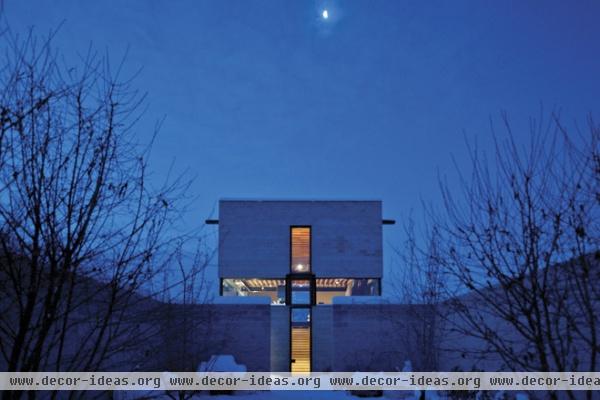
Myth: Flat Roofs Are Expensive
Relative costs can be hard to quantify, but I would argue that flat roofs are materially more efficient than sloped roofs. This is for two reasons. First, you’re using fewer resources to construct the actual roof assembly. It takes quite a bit of material to construct a pitched roof: shingles or metal, rafters, ridge poles, insulation, bracing, collar ties etc.
And second, flat roofs ensure that you’re heating and making use of all of the space you construct. Oftentimes space that’s above the ceiling plane in sloping roofs is underutilized or must be heated because there’s mechanical equipment housed there.
This home by architect Tom Kundig is an elemental composition in the harsh, high-desert region of Idaho. The geometries are composed of concrete block that simply defines the volume of the home. It’s hard to imagine that these proportions could be achieved with a pitched roof.
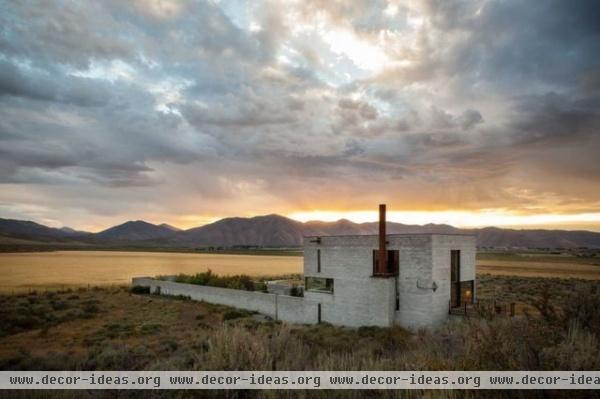
Granted, some of the materials and installation costs for flat roofs can be more expensive than those for a traditional sloped roof, but cost comparisons really depend on final material choice. A properly designed pitched wood shingle roof would cost more than a flat roof with a waterproof membrane covering the same floor area. There’s a good reason flat-roof systems are used in commercial buildings: They’re cost efficient.
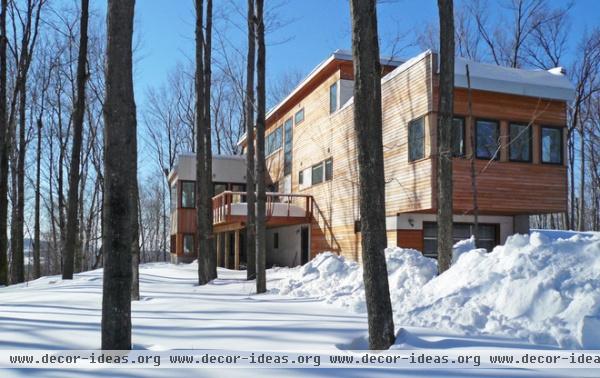
Myth: Flat Roofs Are Flat
Anytime architects speak about a flat roof, they really mean “almost flat.” This is because every flat roof must have some built-in pitch, usually a minimum of ¼ inch per foot, for it to shed water.
There are essentially two ways of shedding the water that accumulates on flat roofs. The simplest is to pitch the roof to a scupper or, as in the home here, to the roof edge. The second is by locating one or more drains at various points along the flat roof, piped separately to drain away from the building.
To create the pitch on the roof, we often use a special insulation called tapered insulation. This has a preset pitch to slope the water to the drains and is layered above the roof framing. This has the added benefit of further insulating the roof.
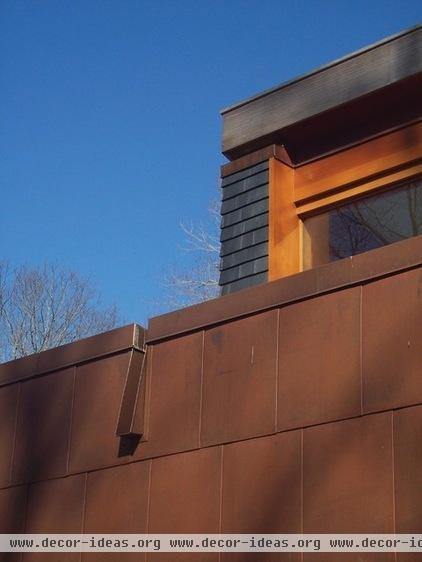
The number of roof drains required will be determined by the roof area, but even for small roof areas, I like to use a minimum of two drains. International building codes require some means of handling overflow if a drain becomes clogged. This can be an overflow-type drain placed roughly 2 inches above the main drain, or a scupper placed at the wall edge.
A scupper on this roof can be seen peeking out of the copper flat-roof volume. The bottom of the scupper indicates the roof level behind the parapet wall. The wall height was set by the coursing of copper panels, and the overall facade proportions and the height of the flat roof this wall conceals are independent of the wall height.
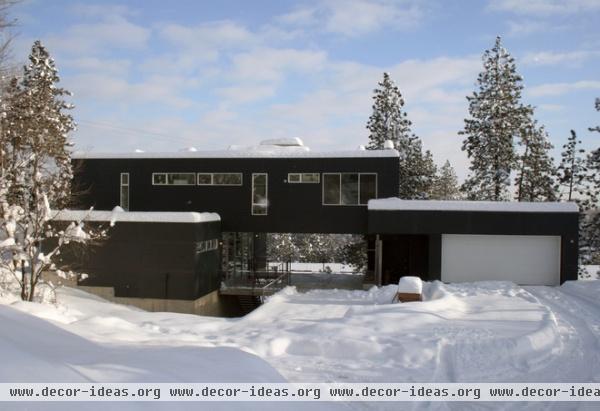
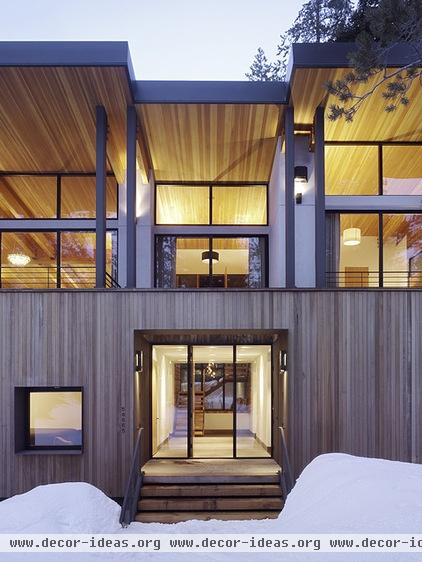
Myth: Flat Roofs Are Maintenance Nightmares
Unfortunately, to own a home is to take on maintenance, which comes in a variety of forms. A flat roof requires maintenance, much like any other roof. And a roof with drains requires more attention than one without.
But, as I said earlier, proper design should ensure that this maintenance is minimized, and that drains remain functioning even when seasonal maintenance takes a backseat to a busy life.
Clearing debris from drains and scuppers is of paramount importance on a flat roof, but it’s a straightforward task similar to gutter maintenance. A quick sweep of the roof and an inspection of the membrane for tears should be done when clearing the drains, and tears fixed when noticed.
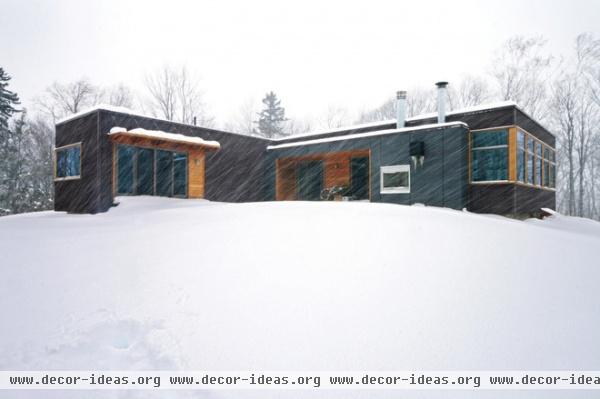
Armed with this knowledge and partnered with a professional experienced in the design and construction of flat roofs, you can enjoy your slice of modernism — even when surrounded by snow.












